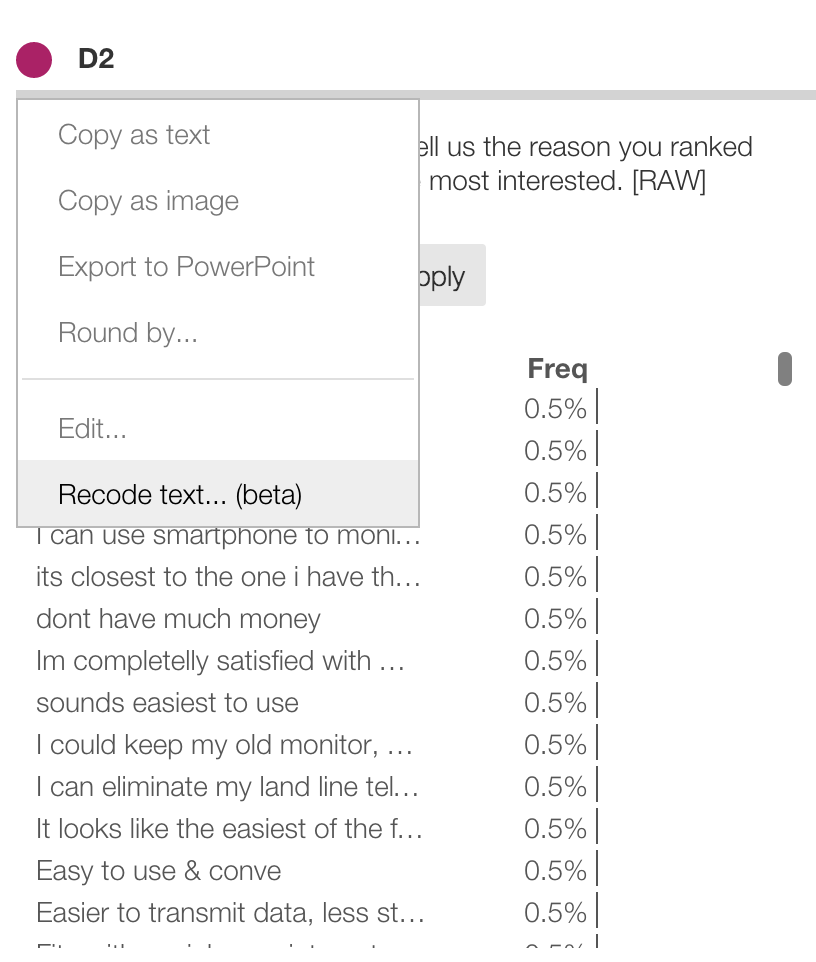Text verbatims
June 15, 2015
Protobi now enables drag-and-drop recoding for text verbatims!

Why text verbatims
When you ask someone how they're doing, or what their plans for the summer are, do you give them closed form choices from which to answer?
- (a) Travel
- (b) Beach
- (c) Work
- (d) Write a book
- (e) Other (specify) ___
Of course, not. So why are 99.8% of survey questions asked this way? Because it's easier for the analyst.
What we lose is rich insights about the market. Why do customers choose our product? What is it's biggest hassle? How are they solving this problem our product? Some of the most important things we want to learn from our customers can come from open-ended response questions.
It's pretty rare that a major qualitative pearl comes from a closed ended response. You don't often hear marketers say "Wow, 45% of people 'Strongly agree' with Statement A. I thought that would have been closer to 35%. That's an important insight"
But it is pretty common to get such pearls from text verbatims. You do hear marketers react to findings like "Wow, 16 people mentioned this product is hard to open with one hand. I didn't expect that. We should look at the packaging."
Text analysis
There are lots of ways to look at text responses. Actually reading them is great, but we often need to reduce them for presentation.
For really large datasets, or very long responses natural language analysis, including sentiment analysis, can be very useful, with leading libraries such as Indicio.io and SPSS Text Analytics.
For typical surveys, a great approach is often to code responses into categories. The exact categories are typically not defined in advance but emerge by the analyst scanning the responses and defining them dynamically. This yields discrete responses that are amenable for summary presentation and further analysis.
The main problem is that coding is a hassle. There's different ways to do, but net net it's a pain. And that's why most researchers tend to avoid open-end text questions in their surveys.
Recoding text in Protobi
Protobi now has a cool tool to simplify coding text verbatims into categories. It applies to any string variable
(i.e. set type: "string" in the Edit menu for the element).
Click the edit icon and select "Recode text..." This brings up the verbatim coding tool, which lets you drag and drop values to create, coalesce and dissolve categories. Click to expand codes and see their values.

Changes immediately apply to the element, and are saved within property recode of the element. The changes save to
the server with the rest of the project. If you press the "Save" button they'll save, but you can reload without saving
so you can experiment without worries.
